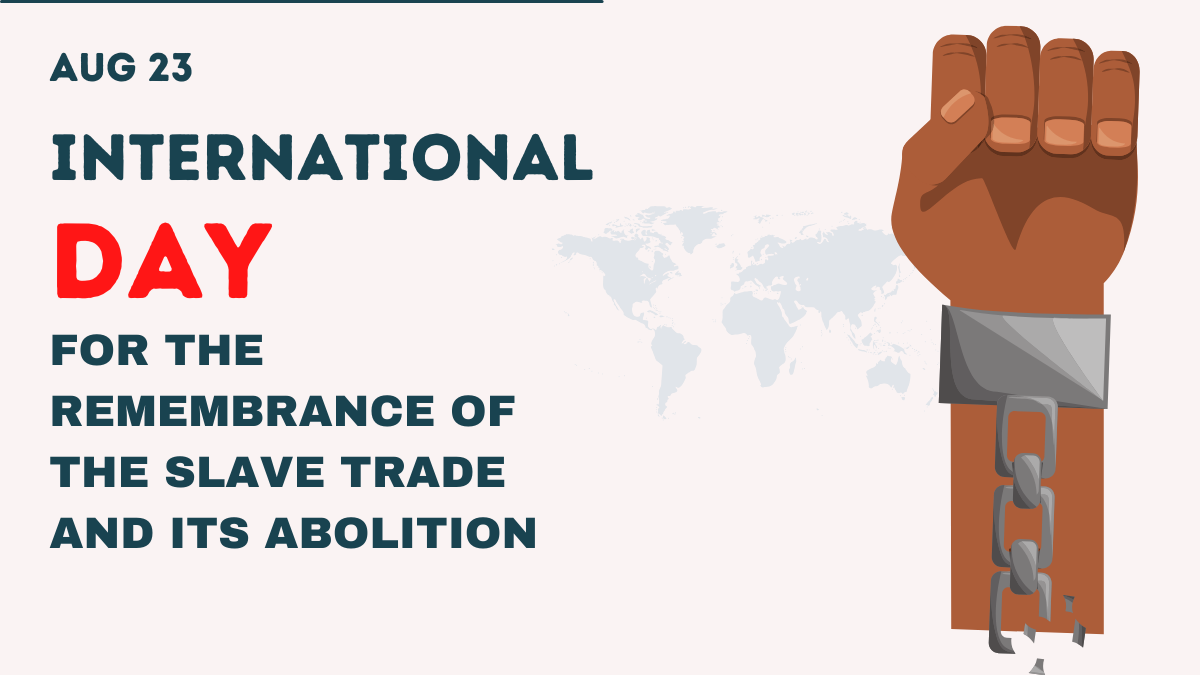On the night of August 22-23, 1791, a momentous event occurred in Saint Domingue, known today as the Republic of Haiti. This night marked the beginning of an uprising that would play a pivotal role in the abolition of the transatlantic slave trade. The rebellion, which later evolved into the Haitian Revolution, sent shockwaves through the colonial world and became a symbol of resistance against slavery and oppression.
Establishment of the International Day
UNESCO’s Initiative
In recognition of the significance of this historical event, the United Nations Educational, Scientific and Cultural Organization (UNESCO) established the International Day for the Remembrance of the Slave Trade and its Abolition. This day is commemorated annually on August 23rd, aligning with the date of the Saint Domingue uprising.
Early Commemorations
The International Day was first celebrated in various countries, with notable observances taking place in:
- Haiti on August 23, 1998
- Gorée Island, Senegal on August 23, 1999
These initial commemorations set the stage for a global recognition of this important day.
Purpose and Significance
Inscribing the Tragedy in Collective Memory
The primary intention of this International Day is to inscribe the tragedy of the slave trade in the memory of all peoples. It serves as a solemn reminder of one of the darkest chapters in human history, ensuring that the experiences and struggles of enslaved peoples are never forgotten.
Collective Reflection and Analysis
This day provides an opportunity for collective consideration of several crucial aspects of the slave trade:
- Historic Causes: Examining the social, economic, and political factors that led to the establishment and perpetuation of the slave trade.
- Methods: Analyzing the brutal practices and systems employed in the capture, transportation, and exploitation of enslaved peoples.
- Consequences: Reflecting on the long-lasting impacts of slavery on individuals, communities, and nations.
- Global Interactions: Studying the complex interactions and relationships that developed between Africa, Europe, the Americas, and the Caribbean as a result of the slave trade.
The Routes of Enslaved Peoples Project
An Intercultural Initiative
The International Day aligns with the goals of the intercultural project known as “The Routes of Enslaved Peoples“. This UNESCO initiative aims to:
- Promote a better understanding of the causes and consequences of slavery.
- Highlight the global transformations and cultural interactions that have resulted from this history.
- Contribute to a culture of peace by encouraging reflection on cultural pluralism, intercultural dialogue, and the construction of new identities and citizenships.
Global Observance and Activities
Educational and Cultural Events
Countries around the world mark this day with various activities:
- Educational programs in schools and universities to teach about the history of slavery and its abolition.
- Cultural events such as exhibitions, performances, and lectures that explore the legacy of the slave trade.
- Memorial ceremonies at significant historical sites related to slavery and the slave trade.
Promoting Dialogue and Understanding
The day serves as a platform for promoting dialogue between different cultures and peoples, fostering mutual understanding and respect. It encourages discussions on human rights, racial equality, and the ongoing fight against modern forms of slavery.




 National Energy Conservation Day 2025: M...
National Energy Conservation Day 2025: M...
 International Day Against Colonialism in...
International Day Against Colonialism in...
 International Day of Neutrality (12 Dece...
International Day of Neutrality (12 Dece...







